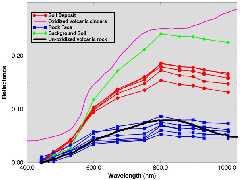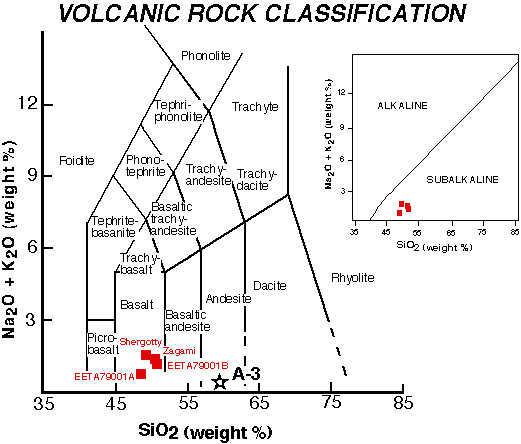 |
Preliminary data acquired from the multispectral spot
image sequence for Barnacle Bill rock. Images were acquired
with no compression in all geology filters. Reflectance spectra (that is,
the variation of brightness with wavelength, or color) are shown for background
soil (green), soil-like deposits found on and within small holes in the
rock (red), and dark portions of the rock face (blue). Comparison of the
spectra of these three types of materials demonstrates that the rock has
relatively homogeneous composition at the spatial resolution of the patches
sampled (about 1-3 cm). That is, all soil-like deposit and rock face spectra
cluster in both their overall brightness (reflectance) and shape of their
reflectance curves. A more heterogeneous rock would show variable spectral
characteristics across its face. Note that the spectra of the soil-like
deposit is intermediate to that of the background soil and rock face spectra.
This is consistent with the interpretation that the soil-like deposit is
a relatively thin layer in which portions of the rock are also sampled
within the patches selected.
Also shown are laboratory spectra of oxidized and unoxidized volcanic
rocks from Earth. Scientists will compare spectra of terrestrial materials
such as these to help determine the composition of the rocks observed at
the landing site in combination with data returned by other instruments
such as the APXS. |
